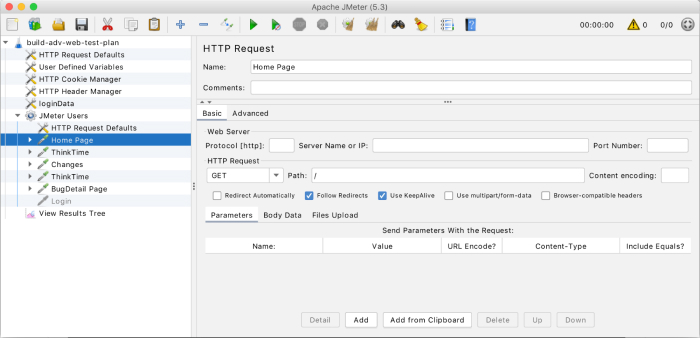Edge Case Testing
In software development, we build and test apps based on specific use cases and conditions decided during the planning and design stages. This ensures the application functions as expected before it is released.
However, real-life usage can be quite unpredictable. Occasionally, users take the apps way beyond what you could have ever imagined, leading to new complications. This is when edge case testing becomes handy in order to capture and address such unusual circumstances.
What is Edge Case Testing?
Edge case testing is a software testing technique that investigates how an app behaves when it is under unfamiliar or extreme conditions. These conditions represent the limits of what the software is intended to handle.
For example, consider a financial application that only permits transactions worth $10,000 as the maximum amount being processed. If a user attempted to process a transaction for exactly $10,000, this would be considered an edge case. On the other hand, another scenario would be to see what happens if the user tries to perform a transaction costing $10,001.
Edge case testing aims to ensure that the system still works correctly without breaking down or behaving unexpectedly, even after being pushed beyond its limits. Thus, it ensures that even though some situations may not occur frequently, they do not crash the application if they happen.
Importance of Edge Case Testing
Though edge cases might seem rare, their impact can be significant if they aren’t addressed properly. Here are some common reasons why we need edge case testing:
- Ensures the robustness of the application by confirming that it handles all possible input and usage scenarios gracefully.
- Reduces the risk of crashes or undesirable behaviors in production, thereby improving user trust and satisfaction.
- Meets quality standards & regulatory requirements mainly on critical systems where failures would result in severe consequences.
Strategies for Effective Edge Case Testing
Below are things you need to look at when conducting edge case testing:
- Identify potential edge cases: You need to think about some of the unusual situations or inputs that could occur. This can include maximum and minimum values, unexpected combinations of inputs, and scenarios that interrupt normal operations.
- Use equivalence partitioning: Group similar inputs that are likely to produce the same output.
- Boundary value analysis: Focus on the boundaries of input values since they are common points of failure.
- Automate where possible: Automate edge case tests to perform them consistently and efficiently. This is especially important for applications with many possible inputs or complex user interactions.
- Prioritize based on risk: Prioritize testing based on the likelihood and potential impact of failure.
Implementation of Edge Case Testing
To make sure your software can handle extreme conditions effectively, you need to follow a systematic approach when implementing edge case testing. Below is a step-by-step guide with an example involving an online payment system for better understanding.
Step 1: Test Plan Development
A test plan has to be developed detailing possible edge cases along with methods and tools used during testing.
For instance, consider a case where you are testing an online payment system. One example of an edge case to consider could be making payments exactly at midnight while transitioning from one day to another. Hence, your test plan needs to include testing transactions around midnight, including what happens if a transaction is initiated at 23:59 and ends after midnight.
Step 2: Testing Tool Selection
Choose relevant tools for testing that support effective simulation of edge cases. These tools should be capable of mimicking extreme situations and border scenarios.
You can select test automation tools like Selenium or JMeter. For example, Selenium can make payments at specific times, like 23:59 and 00:00, by imitating user actions. JMeter is useful in performing stress tests on the system, whereby it simulates multiple transactions that occur simultaneously during boundary timings.

Step 3: Test Case Design
Create separate tests for all identified edge cases. This will make sure that these tests cover the limit values as well as extreme conditions.
For instance, two different cases could be designed to check the above scenario:
[blog-subscribe]
Test Case 1: Payment at 23:59
- A transaction starts one minute before midnight (11.59 PM) and ends a few seconds after it is over.
- Check if the transaction has been recorded with the correct date and time details.
- No data loss or incorrect records should occur during this transaction process.
Test Case 2: Payment at 00:00
- Simulate a transaction that starts precisely at midnight (exactly 12:00 AM).
- Ensure the payment goes through smoothly and the transaction is logged with the new day’s date.
- Day transitioning should happen without causing any errors or inconsistencies in data flow within systems.
Step 4: Continuous Integration
Edge case testing should be included in the continuous testing process. This ensures that issues related to edge cases are discovered promptly as part of the regular development cycle.
Continuous integration tools like Jenkins or GitLab CI/CD can enable you to incorporate edge case tests into your daily automated testing pipeline. This ensures that any modifications you make to the systems’ code do not hinder its ability to handle edge cases.
Step 5: Review and Update
Continuously update and review the edge cases as new scenarios arise and the application evolves. This guarantees the relevance and comprehensiveness of the edge case tests.
For example, if you were to expand this system to accommodate different time zones, you would need to revise your test cases by entering these new time zone data so that it can deal with midnight transitions in several regions.